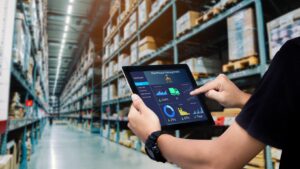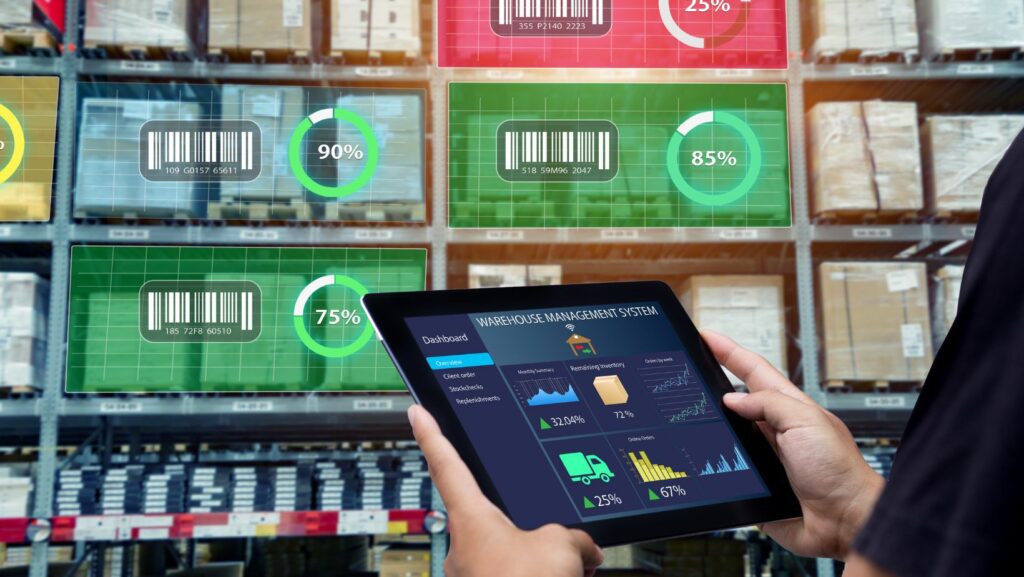In the dynamic world of logistics, warehouse technology has emerged as a game-changer. It’s no longer just about storing goods; today’s warehouses are buzzing with cutting-edge tech that’s transforming the way businesses operate.
From robotics to AI, these advancements are revolutionizing the industry, offering unprecedented efficiency and accuracy. They’re not just shaping the future of warehousing but redefining the entire supply chain landscape.
Warehouse Technology

From the integration of manual labor to wireless advancement, warehouse technology’s journey is one of ceaseless innovation. In the early 20th century, warehouses were predominately manual operations. Workers handled stock by hand, with paper-based tracking systems the norm.
The 1980s marked a distinct shift. Technology’s grip tightened as computer-based Warehousing Management Systems (WMS) came into play. These systems revolutionized logistics and warehouse operations, enabling better tracking and management of inventory. In the 90s, warehouse technology marked another leap-forward with the adoption of Radio Frequency Identification (RFID). RFID allowed real-time tracking of goods, increasing speed and accuracy in warehouses.
Fast-forward to today, technology’s footprint is cementing further. Artificial Intelligence, robotics, and automation are not futuristic concepts anymore but integral parts of modern warehouse operations. These technologies work in harmony, optimizing warehouse efficiencies, reducing costs, enhancing accuracy, and ultimately reshaping the logistical landscape.
Key Technologies Revolutionizing Warehouses
Innovation is at the center of warehouse operations today. Autonomous mobile robots (AMR), for example, strategically streamline material handling, reducing human involvement in picking and transporting tasks. Modern AMRs take direction from warehouse management systems, allowing for precise, programmed movements.

Similarly, Internet of Things (IoT) devices are commonplace in warehouses, aiding in inventory tracking, temperature control, and predictive maintenance of machinery. By harnessing real-time data, the IoT transforms the warehouse environment, offering unprecedented insights and control.
Next, technologies like artificial intelligence (AI) and machine learning (ML) offer powerful predictive capabilities and decision-making support. Organizations employing these tools optimize their operations, improving stock management and forecasting future trends.
Lastly, there’s augmented reality (AR). The introduction of headsets like Google Glass offers visual prompts to guide operators through their tasks, speeding processes and reducing errors. Within the walls of a modern warehouse, technology is undoubtedly revolutionizing the landscape.
Benefits of Advanced Warehouse Technology
Advanced warehouse technology bolsters operations with several significant benefits. First, it increases efficiency by speeding up repetitive tasks that were originally tedious and time-consuming. For example, autonomous mobile robots can manage heavy-duty lifting, allowing staff to focus on strategic areas of operations.
Secondly, it integrates comprehensive tracking systems, namely IoT devices, that eradicate common issues like lost items, ensuring seamless consignment movement. Precisely, pallets fitted with RFID chips provide real-time location data.
Thirdly, innovation in the form of AI and machine learning endows warehouses with predictive capabilities. These technologies, applied in areas like demand forecasting, lessen instances of overstocks and out-of-stocks, improving overall inventory management.

Lastly, augmented reality (AR) aims to enhance worker safety by offering visual guidance in task execution and maintenance activities. The upshot isn’t merely an improvement in process workflows, but an increase in worker safety and productivity.
In essence, advanced warehouse technology presents a combination of benefits that’s hard to ignore, fostering not only operational improvements but also strategic advantages in the competitive logistics industry.
Challenges in Implementing New Technology
Warehouse technology’s journey from manual labor to AI and robotics has been transformative. Yet, it’s not without its challenges. Businesses must navigate the complexities of integrating new technologies, ensuring they’re compatible with existing systems. They must also invest in training staff to use these tools effectively. Despite these hurdles, the benefits of advanced warehouse technology are clear. They offer increased efficiency, comprehensive tracking, predictive capabilities, and enhanced worker safety. These advantages are not just operational improvements. They’re strategic weapons in the competitive logistics sector. As the industry continues to evolve, businesses that embrace these advancements will be better positioned to meet the demands of the future.

